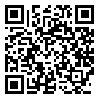Wed, Dec 3, 2025
[Archive]
Volume 9, Issue 3 (August 2022)
IJML 2022, 9(3): 237-247 |
Back to browse issues page
Download citation:
BibTeX | RIS | EndNote | Medlars | ProCite | Reference Manager | RefWorks
Send citation to:



BibTeX | RIS | EndNote | Medlars | ProCite | Reference Manager | RefWorks
Send citation to:
Saghafi M M, Tavakoli A, Ahmadi S, Monavari S H. Antiviral Activity of Arnebia Euchroma and Amniotic Membrane against HSV-1, Rotavirus, and Influenza Virus. IJML 2022; 9 (3) :237-247
URL: http://ijml.ssu.ac.ir/article-1-383-en.html
URL: http://ijml.ssu.ac.ir/article-1-383-en.html
Department of Medical Virology, Faculty of Medicine, Iran University of Medical Sciences, Tehran, Iran
Abstract: (1133 Views)
Background and Aims: Currently, there are antiviral chemicals used to treat viral infections accompanied by limitations such as high levels of toxicity and adverse effects in humans, the emergence of drug-resistant viral strains, low numbers, and limited diversity. Therefore, it is necessary to evaluate new photochemical to obtain new therapeutic methods. The present study was conducted to evaluate the antiviral activity of Arnebia Euchroma (A. Euchroma) extract, amniotic membrane, a mixture of A. euchroma extract and amniotic membrane and its carrier (comprised of Sesam and ostrich oil) against three different viruses, including Herpes simplex virus type 1 (HSV-1), influenza A, and rotavirus in-vitro.
Materials and Methods: A methyl thiazolyl tetrazolium (MTT) assay was performed to evaluate the cytotoxic effect of the above compounds on Vero, MDCK, and MA-104 cell lines. After the determination of non-toxic concentrations, Tissue culture infection dose 50 (TCID50) test was performed to determine antiviral activity.
Results: Among all the above-mentioned compounds, the combination of A. euchroma extract and amniotic membrane at the highest non-toxic concentration for the cells had the highest antiviral activity against all three viruses, leading to 1 log10 TCID50 reduction in influenza A and HSV-1 titers and 0.6 log10 TCID50 reductions in rotavirus titer when compared to the virus control.
Conclusions: The combination of A. euchroma and amniotic membrane can be considered a new antiviral agent to treat viral infections.
Materials and Methods: A methyl thiazolyl tetrazolium (MTT) assay was performed to evaluate the cytotoxic effect of the above compounds on Vero, MDCK, and MA-104 cell lines. After the determination of non-toxic concentrations, Tissue culture infection dose 50 (TCID50) test was performed to determine antiviral activity.
Results: Among all the above-mentioned compounds, the combination of A. euchroma extract and amniotic membrane at the highest non-toxic concentration for the cells had the highest antiviral activity against all three viruses, leading to 1 log10 TCID50 reduction in influenza A and HSV-1 titers and 0.6 log10 TCID50 reductions in rotavirus titer when compared to the virus control.
Conclusions: The combination of A. euchroma and amniotic membrane can be considered a new antiviral agent to treat viral infections.
Type of Study: Research |
Subject:
Virology
Received: 2020/10/19 | Accepted: 2022/05/30 | Published: 2022/10/15
Received: 2020/10/19 | Accepted: 2022/05/30 | Published: 2022/10/15
Send email to the article author
| Rights and permissions | |
 |
This work is licensed under a Creative Commons Attribution-NonCommercial 4.0 International License. |








